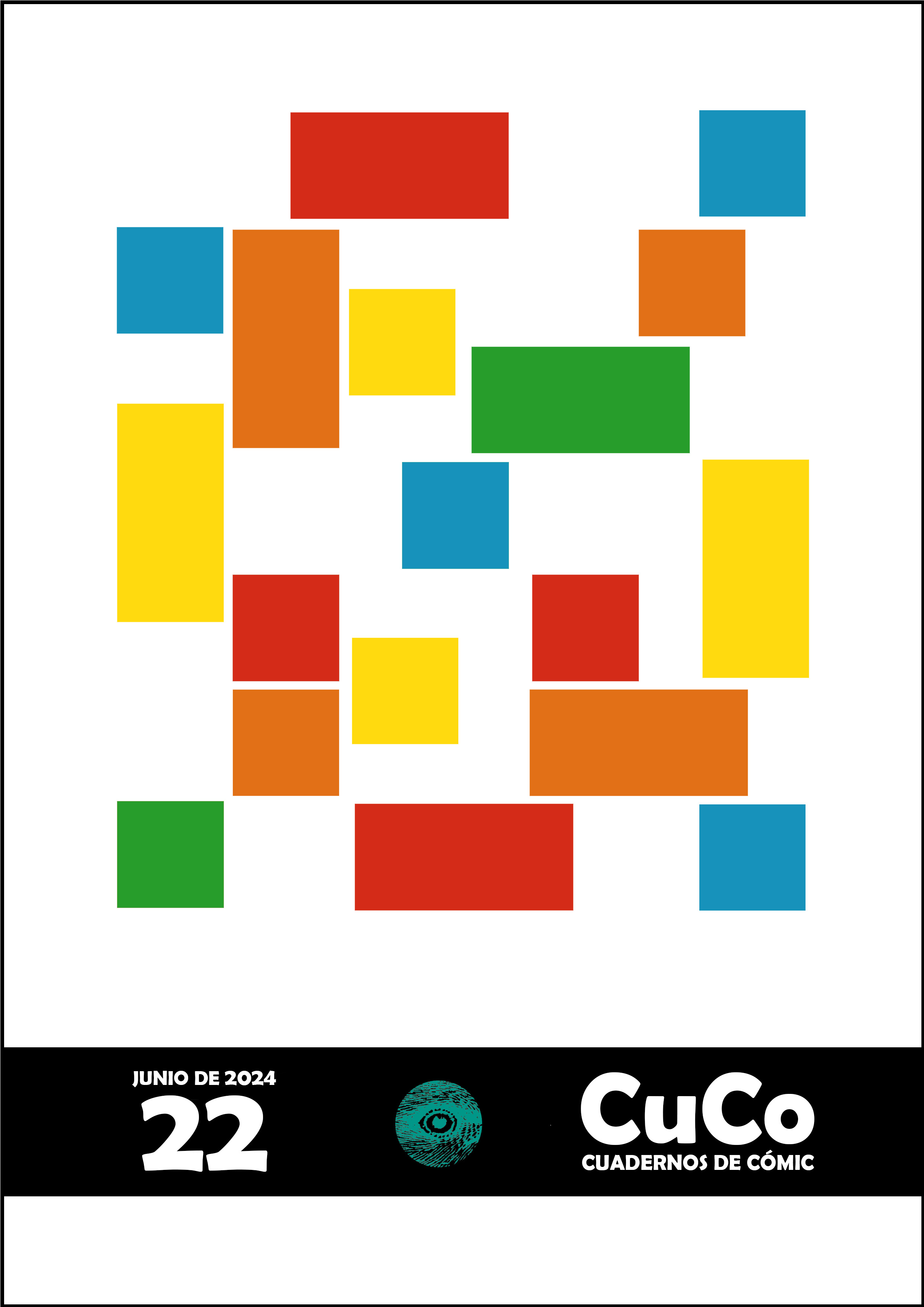Laying Out a Genealogy of Universalism in Graphic Language: From Comenius to Nadia Hafid, Through Otto Neurath
Published 2024-07-08
Keywords
- Nadia Hafid,
- Otto Neurath,
- universal language,
- iconicity,
- ideogram
How to Cite
Copyright (c) 2024 Óscar García

This work is licensed under a Creative Commons Attribution-ShareAlike 4.0 International License.
Abstract
The achievement of universality that inspired scientific currents, social movements and cultural trends during the modern period has undergone an understandable decline in recent decades. But before the Second World War, when its consideration was still rising and it was possible to imagine the adoption of Esperanto as an auxiliary international language, the Austrian philosopher Otto Neurath undertook a similar project applied to visual representation. His ISOTYPE system wished to become a graphic language whose understanding would be independent of the nationality or the language spoken by whoever observed its signs. In this sense, Neurath did not try to achieve a universalism related to the potential of representation, which he himself recognizes at a disadvantage compared to the verbal, but in its use. The impossible desire that guided him was to achieve de-Babelization, a latent pretext in many other attempts to establish a universal language.
The principles of design and organization in the images that Neurath created together with Marie Neurath and the graphic artist Gerd Arntz can be identified in the poetics that guide the work of some current comic book authors who, although they probably would not include the category of the universal among the driving principles of their works, in the way they manage the comic codes, indirectly advance in the same direction. This intuition can lead us to evaluate if the semiotic system of comics, to this day integrated into a globalized cultural heritage, has approached the goal that Neurath set and has even been able to surpass it thanks to the combination of the graphic and the verbal, that increase the possibilities of representation.
This text is intended to outline a genealogy of the universal in the graphic, taking Neurath as its origin of coordinates in order to look back to the past, reaching to the figure of John Amos Comenius, and towards the future, to a group of Spanish comic authors, who profess a poetics in which certain features of that underlying current of universality can be identified, among which we can mention Nadia Hafid, Antonio Hitos, Conxita Herrero, Lorenzo Montatore or Max. This itinerary will allow us to reflect on the nature of the iconic sign, its consideration as a language or system of codes and its value as an instrument of communication and education.
Downloads
References
- ALTARRIBA, Antonio. La narración figurativa. Madrid, Ediciones Marmotilla, 2022.
- ARNHEIM, Rudolf. Arte y percepción visual. Madrid, Alianza Editorial, 1997 [1954].
- BACON, Francis. El avance del saber. Madrid, Alianza editorial, 1988 [1623].
- BAETENS, Jan. «New = Old, Old = New: Digital and Other Comics following Scott McCloud and Chris Ware», enElectronic Book Review, 2001. Disponible en: https://electronicbookreview.com/essay/new-old-old-new. Última consulta en 02/01/24.
- BORGES, Jorge Luis. «El idioma analítico de John Wilkins», en Otras inquisiciones. Buenos Aires, Emecé Editores, 1960.
- CARTU, Marta. Hola Siri. Madrid, Ediciones Marmotilla, 2023.
- COMENIUS, John Amos. Visible World: or, A Nomenclature of all the Chief Things that are in the World, and of Mens Employments therein. Londres, John and Benjamin Sprint, 1728.
- CHARLES, Marc &VILCHES, Gerardo. La Resma. Capítulo 025. Nadia Hafid [Canal de YouTube](15:30 -20:50). Disponible en: https://www.youtube.com/watch?v=UbCjHiKJsyk. Última consulta en 31/12/23.
- —La Resma. Capítulo 029. Antonio Hitos [Canal de YouTube].Disponible en: https://www.youtube.com/watch?v=QJeO72nT3uU. Última consulta en 30/12/23.
- DOMINGO, José. Aventuras de un oficinista japonés. Barcelona, Bang Ediciones, 2011.
- —ECO, Umberto. La búsqueda de la lengua perfecta. Barcelona, Editorial Crítica, 2016 [1993].
- La estructura ausente. Barcelona, Editorial Lumen, 1974 [1968].
- ENTENZA, Ana. Elementos básicos de las representaciones visuales funcionales [Tesis doctoral]. UniversitatAutònoma de Barcelona, 2008, pp. 583-605. Disponible en: https://www.tdx.cat/bitstream/handle/10803/299367/aier1de1.pdf. Última consulta en 31/12/23.
- HAFID, Nadia. El buen padre. Barcelona, Roca Editorial de Libros, 2020.
- —Chacales. Barcelona, Roca Editorial de Libros, 2022.
- HITOS, Antonio. Inercia. Barcelona, Salamandra Graphic, 2014.
- —Materia. Bilbao, Astiberri, 2016.
- JAUME, Andrés. «Pansofismo y conocimiento en el ProdromusPansophiae de J. A. Comenius. Una exposición e interpretación de sus presupuestos epistemológicos», en Logos. Anales del Seminario de Metafísica vol. 47. Madrid, Universidad Complutense, 2014.
- LUX, Jonathan E. «“Charactersreall”: Francis Bacon, China and theentanglementsofcuriosity», en RenaissanceStudies, vol. 29, nº 2. New Jersey, John Wiley &Sons, 2014.
- LYONS, John. Introducción al lenguaje y a la lingüística. Barcelona, Editorial Teide, 1984 [1981].
- MANRIQUE CHARRY, Juan Francisco. «La herencia de Bacon en la doctrina Spinocista del lenguaje», en UniversitasPhilosophica, vol. 27, nº.5. Bogotá, Pontificia Universidad Javeriana, 2010.
- MAX. Qué. Barcelona, Salamandra Graphic, 2023.
- —El tríptico de los encantados. Madrid, Museo Nacional del Prado, 2016.
- MCCLOUD, Scott. Understanding Comics. Nueva York, Harper Collins, 1994 [1993].
- MCELVENNY, James. «International Language and the Everyday: Contact and Collaboration between C. K. Ogden, Rudolf Carnap and Otto Neurath», enBritish Journal for the History of Philosophy, vol. 21, nº 6. London, Routledge, 2013.
- MORTON, John&JOHNSON, Marc H. «CONSPEC and CONLERN: A Two-Process Theory of Infant Face Recognition», enPsychological Review, vol. 98, n.º 2, 1991.
- NEURATH, Marie. «Report of the last years of Isotype work» enSynthese, vol. 8, nº 12. Nueva York, Springer Publishing, 1950/1951.
- NEURATH, Otto. International Picture Language. Londres, Kegan Paul, Trench, Trubner& Co. Ltd., 1936.
- RUNGE PEÑA, Andrés Klaus. «El pensamiento pedagógico y didáctico de Juan Amós Comenio: su papel en la pansofía triádica», en Pedagogía y Saberes, nº 36. Colombia, Universidad Pedagógica Nacional. Facultad de Educación, 2012.
- TOWLE, Ben. «Chris Ware and perspectivewdrawing», en Benzilla [Blog]. Disponible en: https://www.benzilla.com/?p=831. Última consulta en 30/12/23.
- TSIAMBAOS, Kostas. «Isotype diagrams from Neurath to Doxiadis», enArchitectural Research Quarterly vol. 16, nº 1, 2012.
- TWYMAN, Michael. «ThesignificanceofIsotype», en el Catálogo de la exhibición IsotypeRevisited. Reading, Universidad de Reading, 1975.

